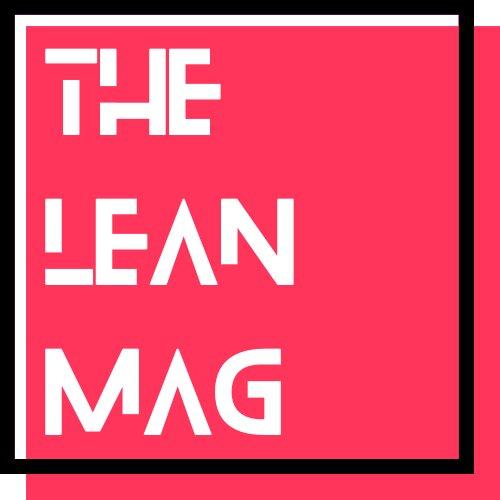Operational Excellence Sustainability – The First frontier of change
The Problem
As Covey said: “Begin with the end in mind”
Why should this principle be applicable to the subject of sustainability when performing improvement projects under the Operational Excellence banner?
What we see in deploying many projects across a variety of organisations is a lot of enthusiasm and energy for change at the start of the initiative only for it to be eaten away by the challenges and issues that develop during a change project.
What are the problems that need to be overcome?
Change initiatives can be generated in many parts or levels of an organisation. What one section of the business thinks is good for another part, can be disregarded or ignored by the senior leaders of the other parts – local autonomous plants, offices or functions. They will see their local/internal priorities as more important than the initiative, or simply ignore the initiative from outside their own world.
Another factor is the number of initiatives that are generated in organisations is not considered with the change capacity of the site. In one factory, in addition the business process improvement we were delivering, we found our own central team had a set of initiatives underway through the banner of quality circles and the site was also delivering its own training in 6 sigma. So, with all the 3 different streams of change requiring business improvement projects, the site ran out of projects and resources for the teams to use as part of their training!
In a different way, the load balance at a personal work level is not considered. Part-time roles or dual roles are often as a solution seen where organisations do not want to make or can’t make a visible increase in headcount. In one organisation where they wanted to take this approach, 12 global facilitators who had other “day” jobs, were trained to deliver part of the leadership skills programme in addition to their daily work. After 2 years only 2 people had effectively used their new skills to deploy to the wider organisation. They had not been given the time, space or opportunity to use their skills effectively balanced with their “day” jobs.
Operational stability
Outside of operations, company-wide initiatives do not necessarily consider the local operational performance. Stability is required to enable focus on supporting OpEx initiatives and providing time and space for testing and learning. It also should be recognised that stability can be lost in operations in a short space of time. In one site OTIF was 98% at the start of the project, however, a month later, just at the point of implementation OTIF dropped to 90%. The consequential focus on day to day operations hoovered up all our operational support for the project and it essentially ground to a halt. By the time stability had returned, the project had been forgotten and the corporate resources who had started the initiative were long gone.
Vacancies
Gaps in the organisation are not necessarily a stopped for projects getting deployed as vacancies will be filled. However sustained turnover of staff as we have found at one shared service centre meant that managers were continually recruiting and training, consequently had little time to spend on supporting change initiatives.
Culture
The culture of an organisation is rarely identified as a barrier to sustainability. However quite often it’s the culture you are trying to change. In one organisation we worked in, we started deploying 5 S as the first point for an OpEx initiative. We were not aware at the time, but here had been a very similar project attempted 12 months earlier. The site had commenced – red tagging (as part of a 5S). Over 500 tags had been issued, but not one of them had been resolved. When I asked the managers, who had instigated the scheme why? they said: “they” pointing at the operators, “did not do anything”. When I asked the operators, they said: “they” pointing at the managers, “did not do anything”. So, when we started our red tag exercise we had a to overcome this inertia and reluctance to get involved from all parts of the organisation.
Measures and targets
The relationship between the change initiative and business objectives as mentioned earlier is key. Where this is missing, the initiative will seem like a luxury and not be given the coaching or support that it requires to be implemented and sustained.
Organisational structure
When OpEx projects are conceived, and deployed it is assumed that that there will be no changes to the organisational structure following the implementation of the project. It is assumed the change will be delivered and business as usual continues with an improvement somewhere in the system. So, the impact and consequences comes as a surprise which the organisation is not prepared for.
Quite often OpEx projects involve a degree of capability build or training so that the team can return up-skilled to use their new knowledge in their day to day work. But what structure exists to support them after they have finished the formal training? Normally its nothing. The skills gained are not developed through coaching nor applied as the teams have little confidence in applying them to the workplace. As the leaders have no comprehension of what’s required of them, they just leave their teams alone to implement.
The solution
The task to succeed is to identify as many of these challenges as possible before the project even starts. To do this it is necessary to envision the future – begin with the end in mind.
This is not an easy task, as identifying what the future may be challenging, but even harder is identifying the enablers and drivers to deliver the visionary picture when that picture is not today. Dealing with that ambiguity and being able to plot a path through uncertain waters is key to successfully sustaining the energy built up in the change process.
The most important factor to resolve is the alignment of the initiative with current business objectives and priorities. In a mature system, the objectives will have been developed through the deployment of strategic objectives which has been converted into a local change plan. This plan consists of a balanced view of the initiatives required to achieve the deployed objectives as well as the local or functional issues. If the initiative fits into this local plan by delivering against the strategic and local objectives it then becomes part of the change plan for that part of the organisation for the coming year. Being on this plan means that it will be allocated resources (and avoid overload), be part of a review process, be part of the leadership standard work for check – act and coaching of the team. These attributes all help the ensure sustainability for the project.
After the alignment check and the establishment of the change plan for the business unit, the next step is getting the right measures and targets to drive the right behaviors to support the deployment of the initiative. Often, we see measures being used which are retrospective and report on what has happened – financial results for example. Whilst these are useful to learn from they cannot help determining the future. What’s needed are forward looking enabling measures. These are formed from understand the drivers for success – what do you have to do or be good do to enable the initiative to succeed – measure these and you will drive success.
Consideration needs to be given to the support structure required to ensure sustainability of the knowledge and skills that have been developed. This takes many forms. The first is the setting of an expectation that the skills will be used and become part of the teams’ and personal objectives. Next the system and structure should be in place to support the team through coaching. This needs to be the leadership – which asks the question, “do they know what to do?” Often the lack of appropriate leadership skills needs to be addressed before the opex project starts as the “middle management gap” needs to be closed as it can be a key barrier to deployment. You may have to “pause” and fill in this gap to get that leadership alignment and support.
In larger organisations, it may be necessary to create a separate support structure or at least a matrix type reporting to support change initiatives. However, these people need to be integrated into business as much as possible to avoid it being perceived as a “hit squad” or elite team who just appear to solve problems. To keep the new knowledge, constant re-fuelling of the input is required – booster sessions, lunchtime learning, benchmarking and learning trios all help to sustain new initiatives where capability development is a part of the project.
Earlier we discussed the issues created by operational instability. For manufacturing areas, this is quite straightforward to determine. It is measured by consistent, quality and timely outputs for the end customer. However, the capability of the team is rarely considered by more than 1-2 factors, for example a skills matrix which only measures capability at a task level or vacancy level which only counts the people in place. A deeper view more focused on the overall process is needed. Measure the “people power” by evaluating the experience and skills of the people through the process can be very insightful in determining the true strengths and gaps within the organisation.
Once the groundwork has been set, the detailed planning for the improvement can begin. Ideally this should just be the next one in the list of the plan we mentioned earlier. Otherwise, if it’s a new initiative, it must find its place on the local or functional plan through sponsorship from the leadership team. This helps to align leadership to the initiative, make choices about what’s important and provide a reference point of support for the working team. The next stage further defines the work through the creation of a scope document. This helps to define the working area, people, measures and objectives. Once the scope is completed a period of time needs to be set aside to collect the relevant data. After this the workshop can be planned. The workshop assembles the cast of characters who work in the area alongside representatives of the supplier, customers, and key stakeholders of the work area.
There needs to be some form of check and review process embedded into leadership behaviors, for example Leadership standard work. This is where the leader as part of his role performs a routine of checks and reviews on key initiatives. This provides an opportunity to review progress on improvement activities to ensure that the required changes are being made to achieve progress and sustainability. These interventions also provide an opportunity for coaching.
So, we can see that there a lot of hidden challenges to enable sustainability of OpEx projects. It starts with creating a positive vision of the future and identifying the route to achieve that vision. The forces that are working against the route either directly or indirectly need to be identified and resolved. Many of the challenges and potential solutions have been discussed in this article, these should be brought together to develop a pre-emptive strike plan at the start of the project to ensure sustainability at the end.
By Neil Trivedi
 Neil Trivedi is a highly experienced Strategy and Transformation Consultant and qualified Lean expert, with broad experience across global platforms within the Automotive, Aerospace, Food, FMCG, Transportation, Biomedical, and Public Sectors. Helping organisations improve their performance by collaboratively tackling complex business problems and designing and implementing solutions that demonstrate tangible benefits to the business. An excellent leader, motivator and manager of people, who communicates well and persuades and influences at all levels within an organisation.
Neil Trivedi is a highly experienced Strategy and Transformation Consultant and qualified Lean expert, with broad experience across global platforms within the Automotive, Aerospace, Food, FMCG, Transportation, Biomedical, and Public Sectors. Helping organisations improve their performance by collaboratively tackling complex business problems and designing and implementing solutions that demonstrate tangible benefits to the business. An excellent leader, motivator and manager of people, who communicates well and persuades and influences at all levels within an organisation.
Connect on LinkedIn







